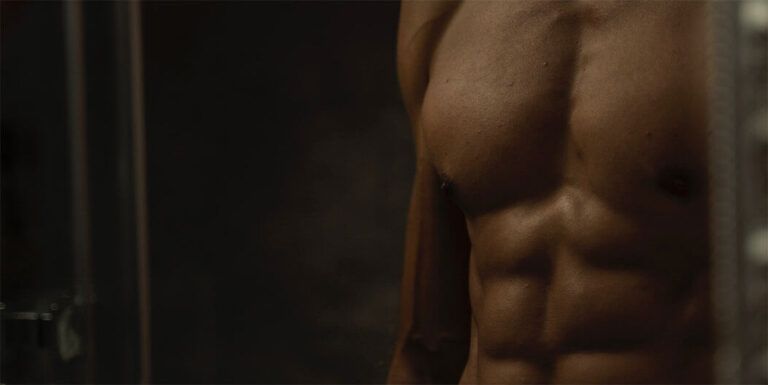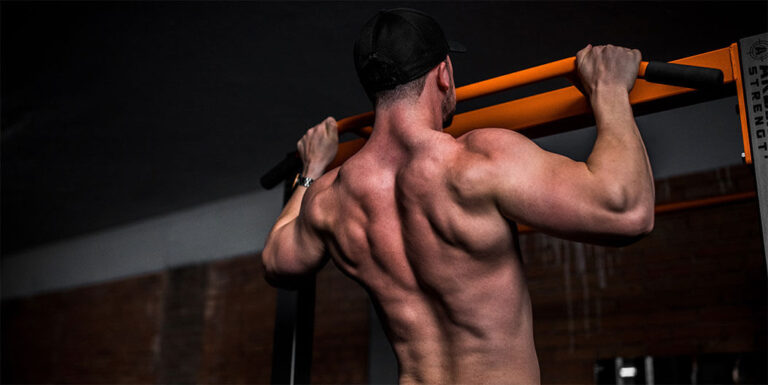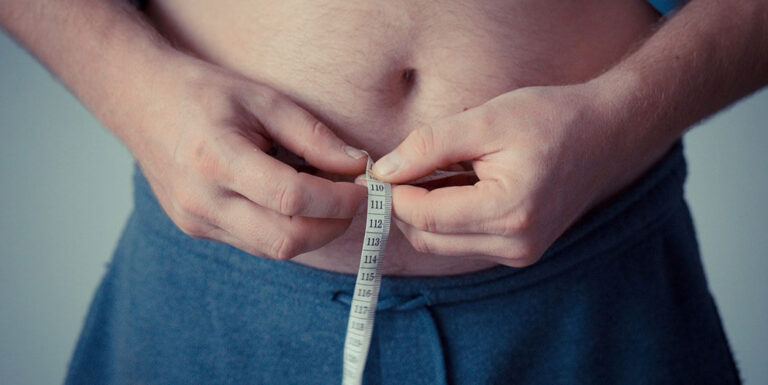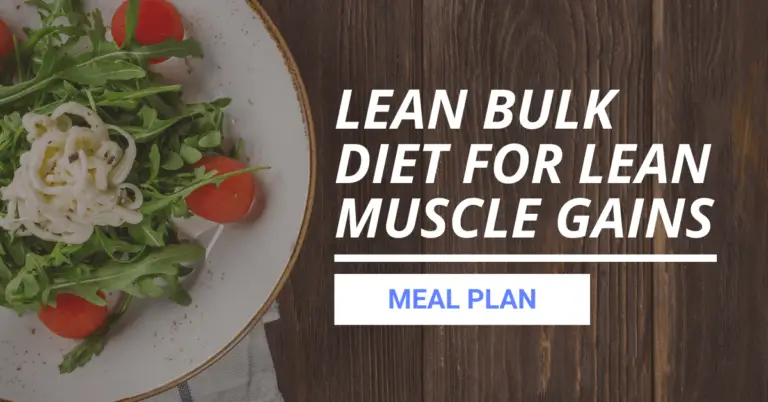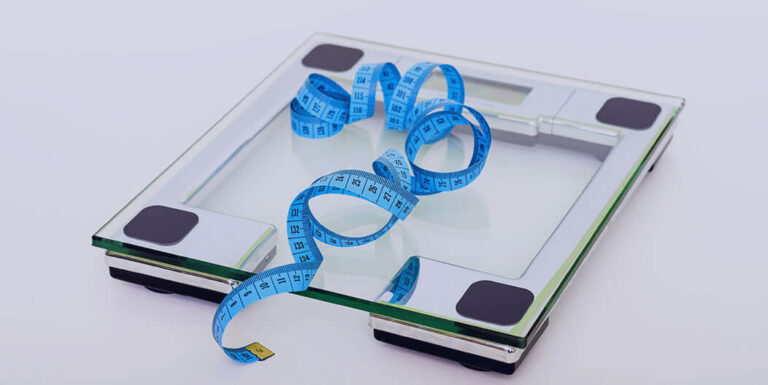How to Get and Keep Abs While Bulking [The Ultimate Guide]
Bulking up can be tough, and it’s easy to let your abs disappear in the process.
You’ve probably heard that you need to bulk up if you want to get big muscles, but it can be hard to do this while also keeping your abs. Thus, most people think that you have to give up on having defined abs when you’re trying to bulk up.
But this isn’t necessarily true – you can have both!
But how do you bulk up without sacrificing your hard-earned abs?
This article will teach you how to get abs while you are bulking. We’ll discuss the best exercises for developing abdominal muscle, how to diet, and ways to make sure that your bulking phase doesn’t sabotage all of your hard work.
But first, let’s start with the basics:
- What Body Fat Percentage Can You See Your Abs?
- Can You Bulk and Get Abs?
- How to Get Abs While Bulking
- Can You Bulk Without Losing Abs?
- 10 Additional Tips on How to Keep Abs While Bulking
- Frequently Asked Questions
What Body Fat Percentage Can You See Your Abs?
Generally speaking, you need to have a body fat percentage of around 10-12% for men and 18-20% for women to see your six-pack abs.
Of course, there are always exceptions to the rule – some people can see their abs at a higher, and some people may see their abs at a lower body fat percentage.
But in general, these are the percentages that you should aim for if you want to see your abs.
Can You Bulk and Get Abs?
YES! It is possible to bulk up and get abs at the same time.
In fact, it’s not as difficult as you might think.
Here’s the thing…
Having visible abs is mostly about:
- Having a low body fat percentage
- Having well-developed abdominal muscles (abs)
Bulking up, on the other hand, is mostly about building muscle mass by:
- Eating more calories
- Consuming an adequate ratio of macronutrients (protein, carbs, fats)
- Following a workout routine that helps you continuously build muscle
Furthermore, you will experience the best muscle growth during a bulk. This also applies to your abs – you will build the most muscle when you’re in a calorie surplus.
But to ensure that you successfully gain weight and get abs at the same time, you need to follow a few key guidelines.
And that’s what we’re going to discuss next.
How to Get Abs While Bulking
If you want to get bigger abs and bulk up at the same time, you need to follow the following key guidelines:
- Start your bulk with a relatively low body fat percentage – around 10-12% for men and 18-20% for women.
- Create a small calorie surplus – will help you bulk up without gaining too much body fat.
- Train your abs while bulking – to build lean muscle mass and improve definition.
- Eat a high-protein diet – to support muscle growth.
Now let’s take a more in-depth look at each of these points.
1. Start Your Bulk With a Low Body Fat Percentage
To have visible abs while bulking, you need to start your bulk with a relatively low body fat of around 10-12% for men and 18-20% for women.
The reason for this is simple.
If you start your bulk with higher body fat, you will probably not see your abs from the get-go, and likely gain even more fat on top of what you already have.
On the other hand, starting your bulk with a lower body fat percentage will minimize fat gain and make it easier for you to see progress.
NOTE
Inevitably, you will still gain some body fat while bulking and lose some visibility of your abs. However, if you start your bulk with a lower body fat percentage, you can minimize this fat gain and will be able to keep your abs visible for longer.
SUMMARY
If you want to bulk up and get bigger abs, make sure to start your bulk with a body fat of around 10-12% for men and 18-20% for women.
2. Create a Small Caloric Surplus
If you want to bulk up without gaining too much body fat, you need to create a small calorie surplus.
This means that you should eat slightly more calories than you burn each day.
You can use TDEE calculators (like this one) to calculate how many calories you should be eating each day.
Once you know your TDEE, you can create a small calorie surplus by increasing your intake by 10-20% per day, if you are a novice/intermediate athlete. In this case, would be to gain no more than 0.25-0.5% of body weight each week (1).
On the other hand, If you’re a more experienced athlete should be more cautious and aim for a weekly weight increase half that of novice/intermediate athletes. That would be a 5-10% increase in calories and a bodyweight increase of no more than 0.15-0.25% per week.
If you really want to keep your abs visible for as long as possible throughout your bulk, I would recommend sticking to the lower end of the calorie surplus spectrum.
SUMMARY
If you want to bulk up without gaining too much body fat, create a small calorie surplus by increasing your intake by around 10-20% per day if you’re a novice/intermediate athlete, and 5-10% if you’re more experienced.
3. Train Your Abs While Bulking
To get bigger abs and improve definition, you need to train your abs while bulking.
This doesn’t mean that you need to do a ton of ab exercises every day.
Instead, you should focus on compound exercises that work multiple muscle groups at the same time and include a few sets of direct ab work, 2-3 times per week.
Some of the best compound lifts are:
- Squats
- Deadlifts
- Hip Thrusts
- Bench Presses
- Standing Shoulder Presses
- Bent Over Rows
- Etc.
As for direct ab work, some of the best exercises are:
- Crunches
- Sit-ups
- Leg Raises
- Hanging Leg Raises
- Planks
- Side Planks
- Etc.
Most importantly, you need to ensure you apply the principle of progressive overload to your training program. This means that you need to consistently challenge your body by lifting heavier weights, doing more reps, and/or both.
To keep track of your workouts, you can use my workout routine template, made in Google Sheets. It allows you to create your workouts, track them, including sets, weight and reps for each exercise, see your progress, and more.
SUMMARY
When it comes to training your abs, emphasize compound exercises that work multiple muscle groups, and do some direct ab work 2-3 times per week. Remember to apply the principle of progressive overload by lifting heavier weights, doing more reps, and/or both.
4. Eat a High Protein Diet
Lastly, you need to make sure that you’re eating a high-protein diet to support your muscle-building goals.
The recommended daily intake of protein, during a lean bulk, is 1.6 – 2.2 grams per kilogram of body weight per day, or 0.7 – 1 gram per pound of body weight per day (1).
In most cases, it should make up at least 20-35% of the total caloric intake.
Other than that, other macronutrients should be kept at moderate levels – 40-60% of total caloric intake coming from carbohydrates, and about 15-30% from fats.
To learn more about how much protein, fats and carbs you should eat during a lean bulk, check out this article on how to calculate your lean bulk macros.
SUMMARY
Make sure you’re eating a high-protein diet. The recommended daily intake of protein is around 20-35% of the total caloric intake.
Can You Bulk Without Losing Abs?
Theoretically yes, you can bulk without losing visibility of your abs.
However, it will require you to consume a very small calorie surplus for a prolonged period of time. It will take a very long time to see results. Essentially, it’s going to be a very slow lean bulk.
So, is it worth it?
If your goal is to build a significant amount of muscle mass and you’re a novice/intermediate athlete in regards to training experience, then probably not.
The trade-off simply isn’t worth it.
You’d be better off doing a more traditional lean bulk where you eat in a small to moderate calorie surplus and then cut down to reveal your abs.
This will allow you to build muscle at a much faster rate while still allowing you to reveal your abs once you cut after bulking.
Plus, it’s a lot less frustrating and you’ll actually see results much sooner.
On the other hand, if you’re an experienced lifter and you want to maintain relatively lean physic while slowly building muscle, then a slow bulk might be for you.
Alternatively, you could consider following a maingaining approach where you eat at maintenance calories (neither a surplus nor deficit) for extended periods of time. This will allow you to slowly build muscle while maintaining the total fat mass, and possibly reducing the total body fat percentage over time as you build more lean muscle mass.
SUMMARY
It’s possible to bulk without losing visibility of your abs, but it’s going to be a very slow process. If you’re a novice/intermediate lifter, it’s probably not worth the trade-off. However, if you’re an experienced lifter who simply wants to put on muscle gradually while maintaining a reasonably lean physique, then a slow bulk or maingaining may be the most optimal approach.
10 Additional Tips on How to Keep Abs While Bulking
Here are a few additional tips on how to maintain abs while bulking:
1. Choose to Eat Whole, Minimally Processed Foods
Try to keep whole, minimally processed foods as the foundation of your diet.
These are generally more nutrient-dense foods which will help you reach your daily nutrient requirements while feeling more satisfied and help you keep a flat stomach while bulking.
Some examples of whole, minimally processed foods include:
- Lean meats
- Fish
- Eggs
- Vegetables
- Fruits
- Whole grains
- Legumes
- Etc.
Feel free to check out my bulking grocery list template for more ideas on what to eat while bulking. You can download it for free, customize it to your liking, and use it as a reference when grocery shopping or meal prepping.
2. Optimize Pre, Intra and Post Workout Nutrition
You want to make sure you’re getting enough nutrients before, during and after your workouts in order to support optimal performance and recovery.
This means eating a nutritious meal which contains a portion of protein and carbohydrates before working out.
During your workout, you can drink a carbohydrate or electrolyte-rich sports drink to help maintain energy levels and hydration, as well as add some essential amino acids (EAAs).
And finally, after your workout, you want to consume a protein and carbohydrate-rich meal within 1-3 hours to help jumpstart the muscle-building process.
Some examples of pre, intra, and post-workout snacks include:
- A bowl of oatmeal with eggs and fruit before working out
- An intra-workout shake containing 20-40g of carb powder and 6-15 g of EAAs
- A post-workout meal containing grilled chicken, sweet potato and vegetables
3. Consume Protein in Every Meal
It’s important to make sure you’re consuming enough protein throughout the day in order to support muscle growth. Plus, it will help you feel more satisfied after meals, which can prevent overeating and unwanted fat gain.
I generally recommend people consume at least 20-25 grams of protein per meal.
Some high-protein foods that you can include in your diet are:
- Chicken
- Turkey
- Beef
- Fish
- Eggs
- Dairy
- Legumes
- Protein Powder Supplement
4. Don’t Have Massive Cheat Meals or Binges
You want to avoid having massive cheat meals or binges as they can quickly offset any progress you’ve made and will likely lead to fat gain and make you quickly lose abs.
That doesn’t mean you can’t enjoy the foods you love, but try to limit yourself to one or two small cheat meals per week while making sure the rest of your diet is on point and you don’t go over your daily caloric targets.
If you do have a cheat meal and go over your caloric targets for the day – get back on track with your diet for the very next meal. In addition, you could consider increasing energy expenditure the same or the following day through some additional cardio.
5. Incorporate Mini-Cuts
If you find yourself getting too far off track or are starting to look too soft, you may want to consider incorporating mini-cuts into your lean bulking phase.
A mini-cut is a short period of time (usually no longer than 2-8 weeks) where you eat at a calorie deficit in order to lose any excess body fat.
This will help you get back on track and improve your body composition. Just make sure not to overdo it as this could lead to muscle loss.
To learn more about how to properly do a mini-cut, check out this guide on mini-cuts.
6. Track Workouts and Progress
Make sure to track your workouts and especially your ab training progress. This will help you stay motivated and help you ensure you are progressively overloading your muscles.
There are many ways to track your workout sessions. You could use a workout journal, an app on your phone, or even just a simple spreadsheet.
I have created a workout tracking template in Google Sheets which you can get for free. It’s very simple to use and tracks all of the important information that you need such as:
- Exercises
- Sets
- Reps
- Rest periods
- Weight lifted
- Total volume
7. Don’t Skip on Cardio While Bulking
Even though your main focus while bulking is to build muscle, you still want to make sure you’re doing some form of cardio.
This will help improve your cardiovascular health, as well as help offset any potential fat gain through increased energy expenditure.
I recommend doing at least 20-30 minutes of cardio, three to five times per week while bulking.
Some examples of cardio exercises that you could do are:
- Brisk Walking
- Jogging
- Running
- Swimming
- Cycling
- Elliptical
- Rowing
- Skipping rope
Just make sure you don’t do too much cardio as this could negatively affect muscle growth.
Recommended Reading: Cardio While Bulking: Benefits and Guide
8. Pay Attention to Your Recovery
If you’re not recovering properly from your workouts, then you won’t be able to make the necessary progress to build muscle.
Knowing when you need to prioritize recovery comes with experience, but there are a few general guidelines that you can follow.
Some signs that you need to focus on muscle recovery are:
- You’re feeling very tired and/or exhausted
- You’re not seeing results even though you’re training hard
- Your muscles are always sore
- Your joints or muscles are always sore
If you find yourself in any of these situations, then you need to focus on recovery.
This may mean reducing your training volume and/or frequency or taking a deload week.
9. Get Plenty of Sleep
Continuing with the theme of recovery, another important thing you can do is get enough sleep.
Most people need around eight hours of sleep per night. However, if you are working out a lot, you might need even more than that – 9 or 10 hours.
Sleep is when your body repairs itself from the damage done during a workout. If you don’t get enough sleep, your body won’t be able to repair itself properly and you will not make the progress you want.
So make sure you are getting enough sleep and focus on recovery.
10. Take Measurements and Progress Pictures
Last but not least, make sure to take measurements and progress pictures.
This will help you track your progress and stay motivated.
I recommend taking measurements every four to eight weeks, and progress pictures every month or so.
This will give you a good idea of how your body is changing and progressing over time.
Frequently Asked Questions
Do You Lose Your Abs When Bulking?
If you have higher body fat and/or are at a large caloric surplus, then you will lose your abs while bulking. However, if you have a lower body fat to start with and are in a small caloric surplus, you have a good chance of keeping your abs while bulking.
So, whether you lose or keep your abs while bulking depends mainly on your starting body fat percentage and caloric intake. If you go above 10-12% body fat (men) and 18-20% body fat (women), you will start to lose visibility in your abs.
Do You Need to Bulk to Get Abs?
No, you don’t need to bulk to get abs. You can still get visible abs while in calorie maintenance or calorie deficit, as long as you have a low enough body fat percentage. However, building muscle will make it easier to get bigger abs and make them look better once you do get them and stay within a body fat percentage of around 10-12% (men) and 18-20% (women).
Do You Need to Train Abs to Get Abs?
No, you don’t need to train abs to get visible abs. You will be able to get visible abs through diet and losing body fat. However, as with any muscle group, ab training can help make them look bigger and more developed, but it’s not necessary to just make them visible.
Final Thoughts
While you may not be able to see your abs at a certain body fat level, it is still possible to bulk and get bigger abs.
You just need to make sure that you are taking the necessary steps to maintain your current body fat while building abdominal muscles.
Use these tips to help you along the way, and remember that patience and dedication are key!
I hope that this article has helped clear up some of the confusion around getting abs while bulking. If you have any questions or comments, please let us know in the comment section below!
References
1. Iraki J, Fitschen P, Espinar S, Helms E. Nutrition Recommendations for Bodybuilders in the Off-Season: A Narrative Review (2019). Retrieved from https://www.ncbi.nlm.nih.gov/pmc/articles/PMC6680710/
